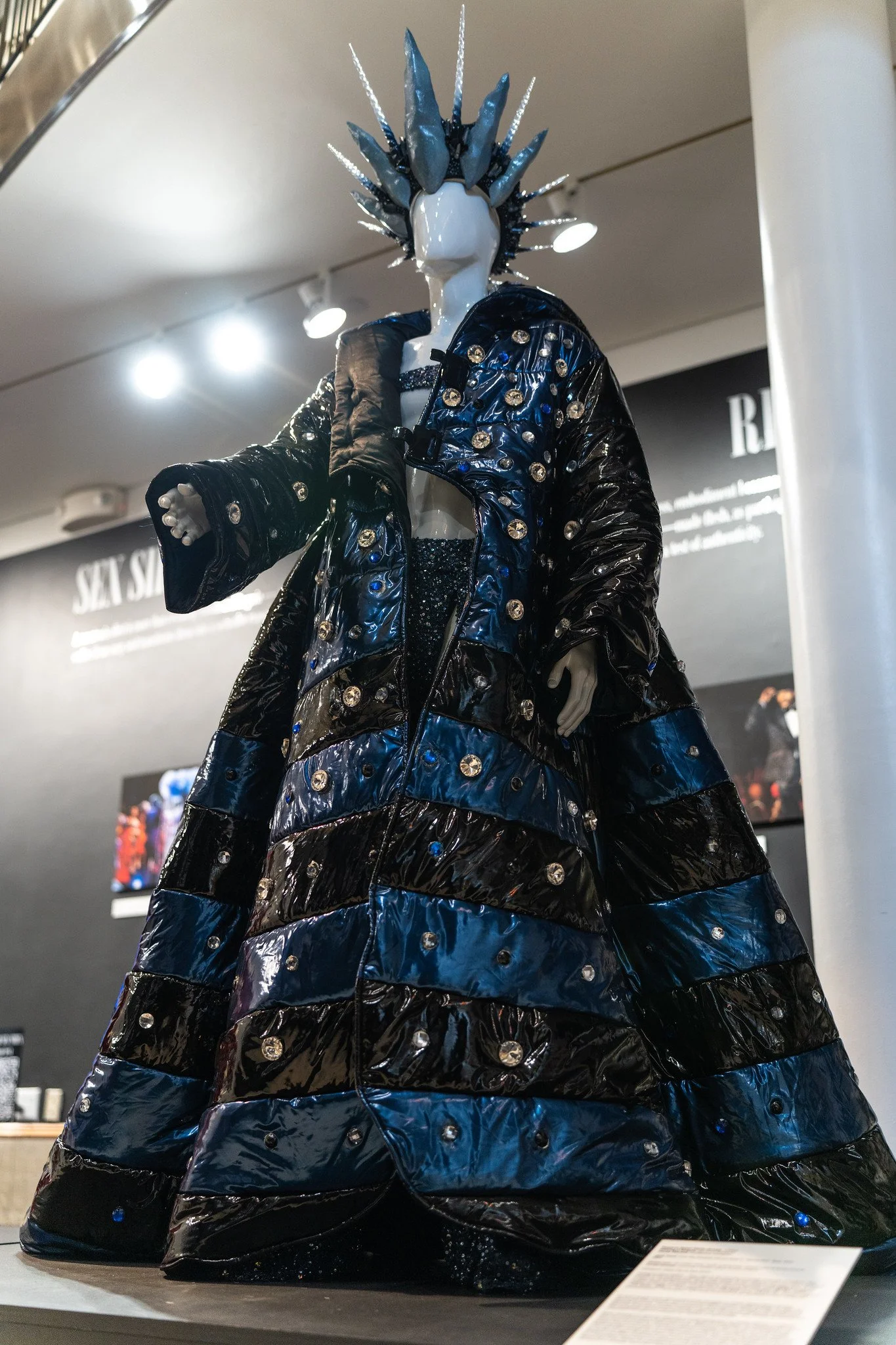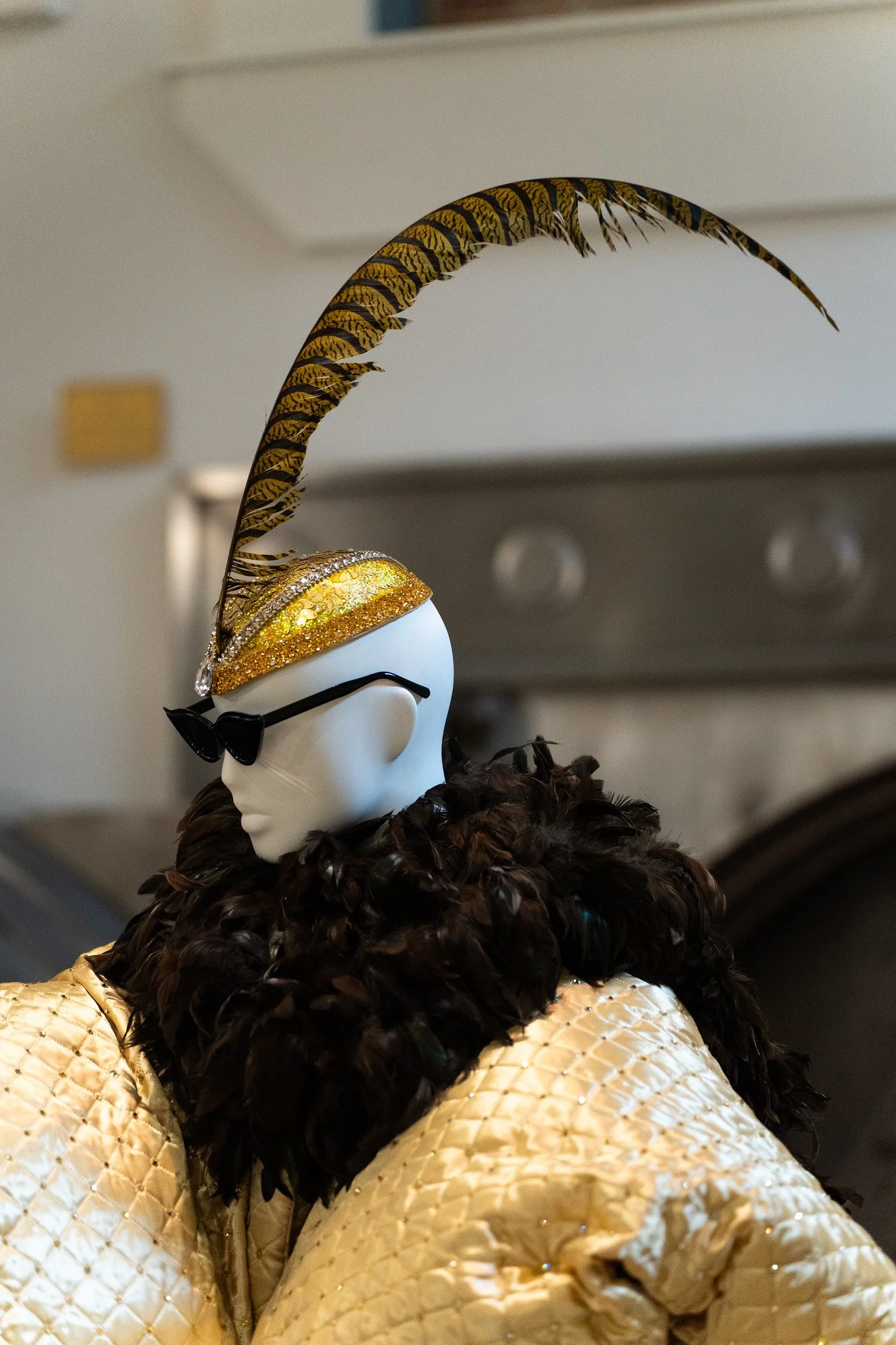Legendary Looks, Largest-Ever House Ballroom Retrospective Opens in NYC
New York City is currently hosting three new exhibitions that celebrate the artistry, resilience, and cultural achievements of the LGBTQIA+ house ballroom community.
Legendary Looks is the largest-ever retrospective dedicated to house ballroom, a Black and Hispanic community that emerged from New York City drag balls of the 1960s. The community gained national attention with Madonna’s 1990 dance single Vogue and the 1990 documentary Paris Is Burning. That film documented historic trans and gender fluid Ballroom stars like Dorian Corey and Pepper LaBeija as they attended elaborate ball competitions whose categories included fashion, “realness,” beauty and voguing.
One of the balls’ fashion categories is the theme of Legendary Looks: The Art of Effects Design in House Ballroom. This show—a strikingly queer and coincidental counterpoint to another New York City exhibition about Black dandyism—features 16 stunning ensembles mounted on mannequins. These displays powerfully recreate the ostentation and drama of the balls’ runway competitions.
At the same time, the costumes resonate as gestures of radical resistance to the violent homophobic oppression many early ballroom participants experienced—and the current Trump administration’s hostility to drag queens and trans people. Within the past and current ballroom environment, flamboyance is something to celebrate, even though many early ball competitions had categories for passing as straight, a survival tactic.
Co-curator Michael Roberson described ballroom culture as the elixir of healing, the political gesture of organizing people, and using art and the public sphere as sites of resistance.
“It has been, and continues to be, a cultural expression responding to race, class, sexuality, and gender oppression,” said Roberson.
Any examination of house ballroom fashion prompts discussions about cultural influence and appropriation. Ballroom houses and their walkers freely adopted the names of European haute couture fashion houses while the European couturiers began borrowing the drama of voguing and posing for their runways as early as 1989 when Willi Ninja walked in a Theirry Mugler fashion show. Around the same time, musician Malcom McLaren hired Willi Ninja for his 1989 Deep in Vogue video, followed by Madonna’s Vogue video featuring members of the House of Xtravaganza.
Decades later, the fashion and pop cultural cross-pollination continues. Marc Jacobs gave his blessing to the House of Marc Jacobs and elevated ballroom members by featuring them in his fragrance campaigns. In Beyonce’s Renaissance album, the singer shouted out ballroom houses and employed ballroom members to perform in her Renaissance tour.
Legendary Looks: My Ballroom Story responds to Paris Is Burning. It spotlights the documentary work of filmmaker Felix Rodriguez, who has spent more than 30 years recording New York City balls. Rodriguez began filming after watching Paris Is Burning, feeling compelled to capture his scene through the lens of an active participant and community member.
“From the moment I stepped into my first ball, I felt an energy so powerful it was as if my soul had found its rhythm,” Rodriguez said in his artist statement. “The room vibrated with creativity, resilience, and unshakable pride. It was more than a competition; it was a movement, a sanctuary, a celebration of survival. For over 30 years, I have dedicated myself to honoring those pioneers who created this movement—many of whom left us far too soon. Through my lens, their legacy lives on—unapologetic, fearless, and eternal.”
Legendary Looks: My Ballroom Story will culminate with a mini ball at Pioneer Works coinciding with the organization’s Second Sundays event on August 10th.
Legendary Looks: Preserving Our Legacy presents the house ballroom community’s efforts to preserve their culture and history. The co-curators of all three exhibitions are ballroom veterans and they achieve their preservation efforts through a collection of ball flyers, archival photos, original costuming pieces, and video and audio excerpts from oral history interviews.
Together, these three Legendary Looks exhibitions remind us how house ballroom culture has permeated mainstream society. Terms like “shade,” “reading,” and “realness” are now common in popular culture, while the acrobatic body movements associated with voguing are a weekly staple on shows like RuPaul’s Drag Race.
Despite this widespread embrace, there is often little acknowledgement of the culture that created these powerful forms of expression. The Legendary Looks exhibitions provide much-needed credit to the pioneering figures of house ballroom whose marginalization and struggles compelled them to forge a community where their flamboyance, beauty and joy could truly flourish.
Legendary Looks: The Art of Effects Design in House Ballroom runs through August 17 at ArtsWestchester in White Plains, N.Y.
Legendary Looks: My Ballroom Story runs through August 10 at Pioneer Works in Brooklyn.
Legendary Looks: Preserving Our Legacy runs from July 25 to September 4 at City Lore in Manhattan.
Photos by Maksim Akelin
Share this article
Qwear is an independent platform that empowers LGBTQIA+ individuals to explore their personal style as a pathway to greater self-confidence and self-expression.
We’re able to do this work thanks to support from our amazing community. If you love what we do, please consider joining us on Patreon!
Support Us on Patreon





